How Preston made it to the seaside in the olden days
and live on Freeview channel 276
A visit to Blackpool from Preston these days is a common thing, yet it has not always the case.
In fact back in 1807 the ‘Preston Chronicle’ gave readers a rundown of what was involved in a trip to the seaside.
Advertisement
Hide AdAdvertisement
Hide AdGeorge Cooke was advertising a suite of rooms to let for a family or party and stating that a covered mail cart, on springs, would take you to Blackpool from the Castle Inn, in Preston, and would continue to do so on Monday, Wednesdays and Fridays every morning about 9am, and return from thence on Tuesdays, Thursdays and Saturdays, at about 6pm during the season; by which means letters and newspapers would be transported every day of the week. The fare for each passenger by the cart on springs was four shillings each way.
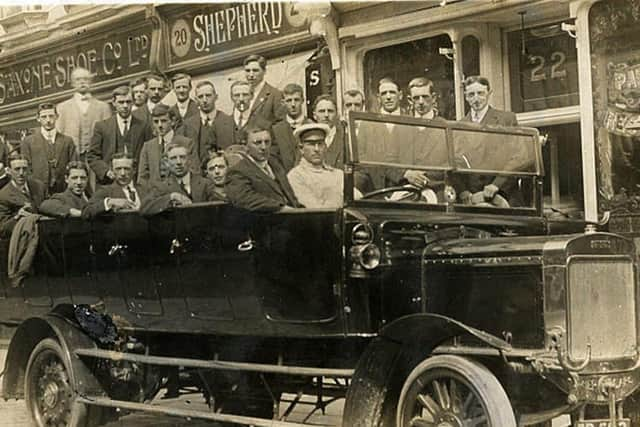

His offered transport was in competition with a stage coach named the ‘Trafalgar’ announced to run between Preston, Lytham and Blackpool twice a week each way.
It was advertised as ‘cheap and expeditious’ but the price was not named and the journey time on the heavily laden coach was put down as six and a half hours.
Blackpool enjoyed a reputation as a seaside resort even in the days before railways became commonplace. During the winter the people of Preston, Blackburn, Darwen and Burnley were accustomed to paying weekly subscriptions to raise the funds for a trip to the seaside.
Advertisement
Hide AdAdvertisement
Hide AdThey were carried to Blackpool in wagons and carts, with the long strings of those vehicles wending their way along the deeply rutted roads presenting quite a spectacle. The programme on arriving at Blackpool was a dip in the sea at regular intervals, a stroll on the sands and occasionally relaxing at the theatre, which was no more than a old barn.
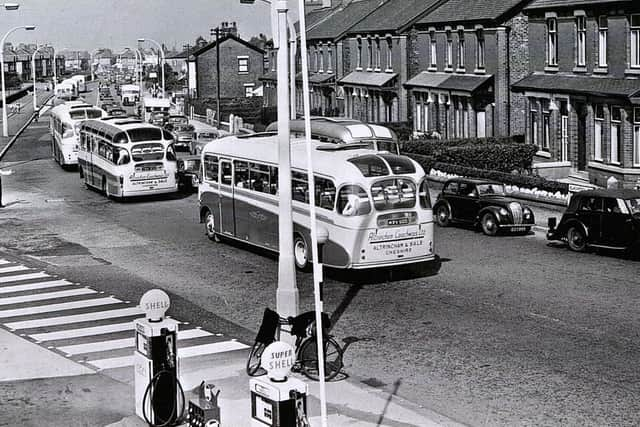

As for a promenade, writing in 1788 a scribe by the name of Hutton had this to say, ‘A promenade six yards wide, carpeted by grass and separated from the road by white, wooden railings, runs along the verge of the sea bank for a distance of two hundred yards. This parade is capable of being extended by at least a mile, in a straight line.’
The opening of the Preston and Wyre Railway in July 1840 meant three times a day travellers to Blackpool could board a train at Preston, alight at Poulton and take a horse drawn conveyance to the heart of Blackpool.
Eventually in 1846 a much appreciated branch line from Poulton to Blackpool was opened with a station on Talbot Road and the railway age had arrived. In 1862 a single line of railway was opened from Lytham to Blackpool which terminated at Hounds Hill, later renamed Blackpool Central station.
Advertisement
Hide AdAdvertisement
Hide AdIn 1868 Anthony Hewitson of the ‘Preston Chronicle’ gave us a taste of what to expect with the following extract from his trip to the seaside in early June remarking thus , ‘The plot thickens at Blackpool just now. Strangers are dropping in, lodging house keepers have their ears up, landlords are dreaming of busy bars and full bedrooms.
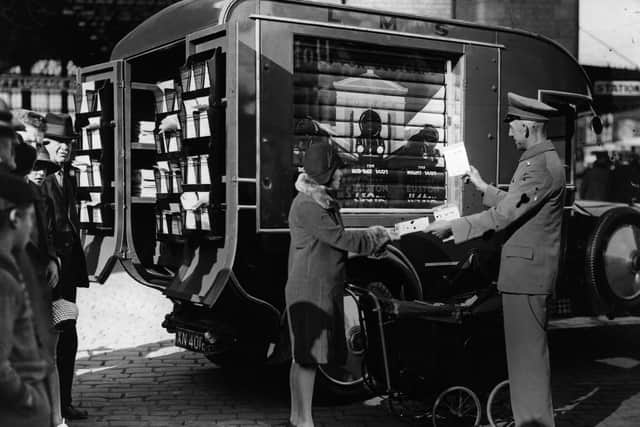

‘Waiters are thinking of sixpences and shillings for services rendered; boot cleaners and the blacking see bright prospects; bazaar proprietors are on the edge of good times; dingy and decaying carriages, which have run so often to Lytham and back, are coming in sight; swarthy fishermen with new guernseys and fresh rigged boats are hanging on for patrons; bathing van owners are drawing up their flimsy vehicles upon the beach; and the turmoil for money will soon reach a fever pitch.’
The Blackpool South station, originally called Waterloo Road opened in 1903. Each new railway station increased the influx of visitors, in 1873 a total of 850,000 passengers had arrived at the two stations and by the early 1890s more than 2m passengers were recorded annually, and as the First World War approached close to 4m passengers passed through the three stations. Blackpool’s population had increased from 13,000 residents in 1881 to almost 60,000 in 1911.
One late Victorian writer had this to say, ‘The central promenade is a catchment basin for an army of quacks, corn curers, palmists, phrenologists, buskers, ventriloquists, acrobats, gospellers and pseudo professors who delight in drawing crowds and relieving visitors of their cash.
Advertisement
Hide AdAdvertisement
Hide Ad'They swarm on to the sands at the retreat of the tide, jostling for pitches for which they pay nothing and attract the crowds by lung power. These expert spielers competing with the established favourites like amongst the jingling donkeys and stalls selling everything from whelks to ice cream, from hot pies to Blackpool rock.’
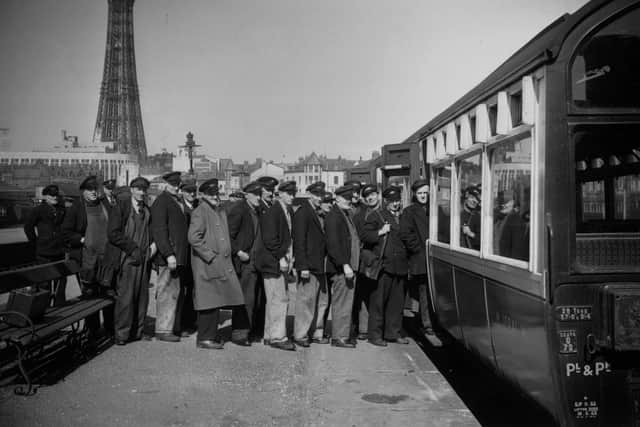

By Edwardian days the ‘Preston Guardian’ was informing readers that Blackpool was ‘A Wonderland By The Waves’ with the Promenade stretching for a length of 1,920 yards and being 170ft wide from South Shore to the Central Pier, with a double lined tramway and a carriage drive.
Countless tons of cement had been used in the construction of the sea walls, with Caithness flags, kerbs and channel stones creating footpaths. Upwards of £150,000 had been spent with more than 600 men continually employed on the construction.
The annual Blackpool Illuminations every autumn, which first flickered into life in 1877, was another reason Preston folk journeyed to the resort.
Advertisement
Hide AdAdvertisement
Hide AdPreston-based Embee Motors and Viking Bus would take you from Starch House Square on a tour of the lights for just two shillings and you could ride in a Bon Chaunce luxury coach for an extra sixpence.
Likewise, the railway companies cashed in on the lights show with special evening trips to and from Preston for one shilling and sixpence. Ribble Motors, which began life in 1919 and took over 50 other operators by 1935, had 100 buses a day running to Blackpool from all over the county and beyond during the summer time.
The number of rail passengers passing the station ticket barriers in Blackpool during the August Bank Holiday week of 1935 was reckoned to have exceeded 500,000 and later in the year around 750,000 caught the train to Blackpool for the illuminations.
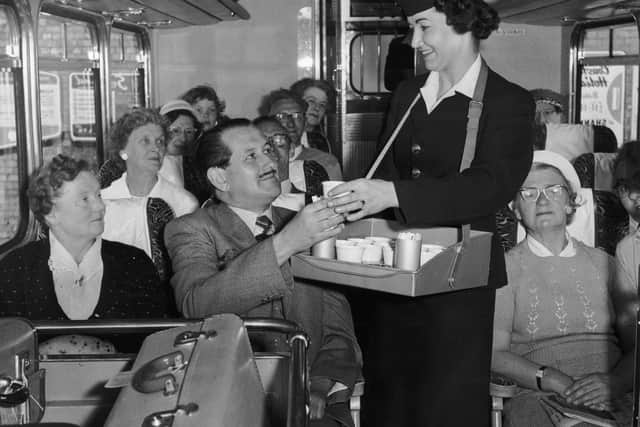

It was a pattern which would continue either side of the Second World War with British Rail and Ribble Motors in a tug of war in Preston and throughout Lancashire for travellers to the seaside.
Advertisement
Hide AdAdvertisement
Hide AdTo visit Blackpool by coach or railway carriage remained most popular in the 1950s but eventually the car became increasingly common and the decline of the railways was reflected in the controversial Beeching Report which recommended the closure of the Blackpool Central Station. The last train departing from there in early November 1964, its closure marking the end of an era when upwards of 40 steam locomotives and their carriages could be stabled in their sidings.
August 1968 marked the last weekend of steam on the British Rail network and crowds flocked on to the Blackpool South station to await the arrival of a Black 5 – 45212 which had in its heyday been working out of Fleetwood. Years of diesel and electric powered trains lay ahead.
Blackpool North station underwent changes to reflect the times when the original 1898 structure was demolished and a new terminus opened in 1974 utilising the platforms where the excursion trains used to arrive daily.
The building of the M55 motorway to Blackpool from Broughton, opened in 1975, provided a 12 mile stretch of motorway that did much to reduce the congestion of the roads and gave Preston people a quicker route to get to the seaside resort than along Blackpool Road, a highway notorious for traffic delays particularly at holiday times.
Advertisement
Hide AdAdvertisement
Hide AdFrom 1987 Preston folk travelling on the coastal line could alight at the new Pleasure Beach station taking them to the heart of the amusement park. A class 142 Pacer train marking the occasion at the timber built station as passengers alighted and others stayed onboard heading for the Blackpool South station.
The recent electrification of the Preston to Blackpool North stretch of track heralded a new era with passengers able to travel directly from London to Blackpool without having to change at Preston.
Comment Guidelines
National World encourages reader discussion on our stories. User feedback, insights and back-and-forth exchanges add a rich layer of context to reporting. Please review our Community Guidelines before commenting.